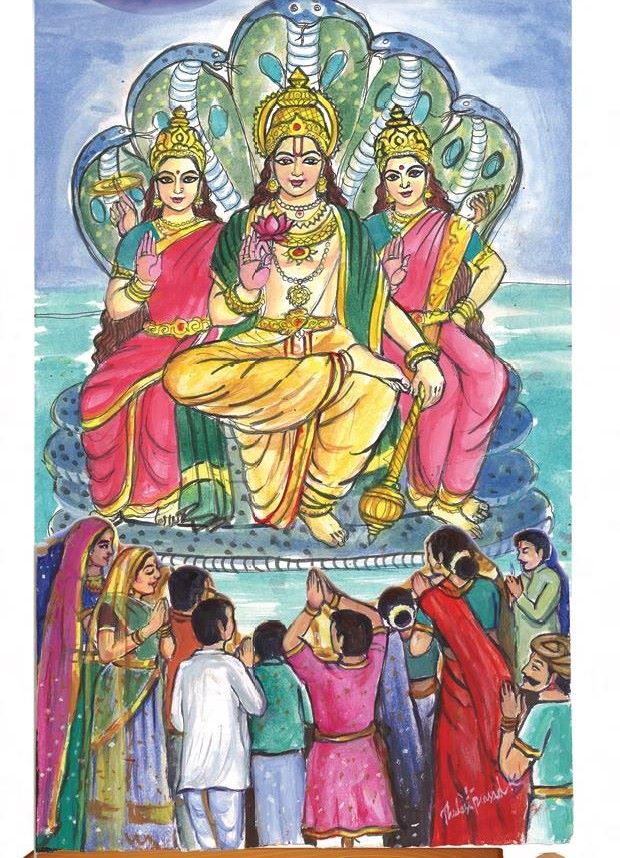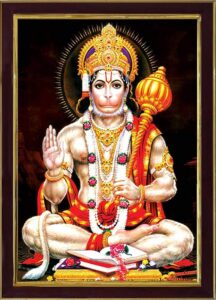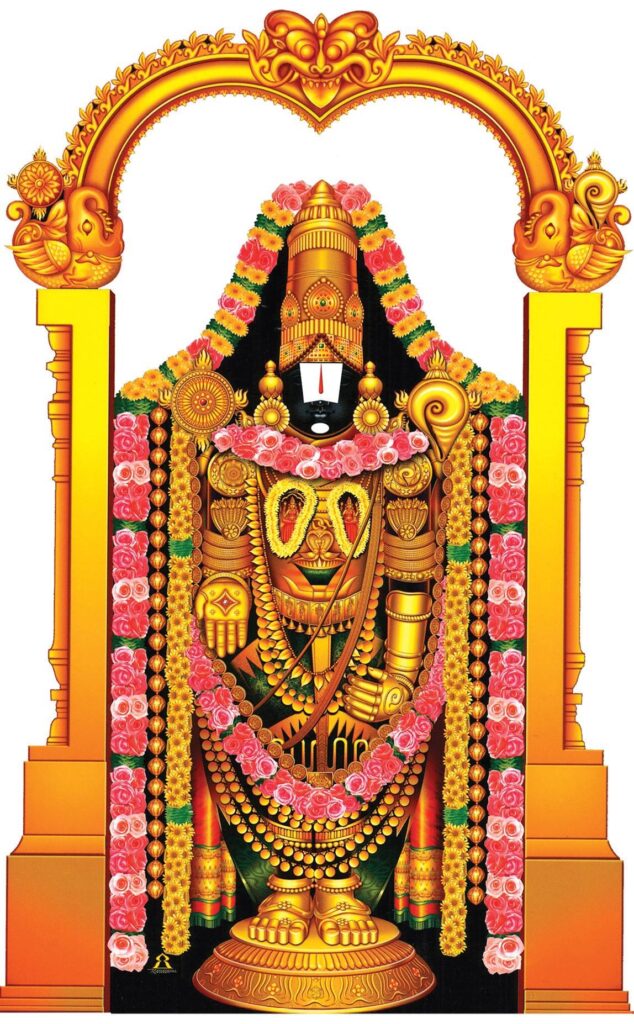3 Modes of Prayer
Man, not only yearns for his well-being but also for the welfare of mankind. It is best channeled through a prayer. A prayer should be uttered with concentration.
Prayer / Worship prescribes three steps :
- Salutation to the lotus feet of Lord Narayana
- Utterance of the pure name of Narayana and
- Contemplation of the tatva of Sri Narayana.
These three steps, if practiced, constitute the tapas or meditation. ‘Tatvam’ here refers to the inexpressible essence of Narayana.
Meditation
In these three modes of prayer, meditation is of utmost importance. Meditation should be like a limpid and unbroken flow of thought directed towards God. The union of the devotee with God brings out for the devotee the fruit and thereby the boon. Praise of God should be sincere singing of God’s qualities, achievements, and effulgence severally as inherent in Gods and Goddesses –
- Gayatri,
- Hanuman,
- Siva,
- Ganesha,
- Narasimha and so on.
A mantra is meant for the initiated after training in accurate pronunciation. A stotra is uttered by people with the conviction that its power is equal to that of mantra. Singing in chanting a mantra and singing the stotra are of equal importance.
Sri Sankaracharya’s Hanumadbhu janga prayata stotra has many unique features. It portrays Sri Hanuman as a personality of composure and valor comparable to those of the Himalayas. His bravery in war is signified by his clarion roar.
His composure, energy, and divine power at work are engaged in carrying out the will of Sri Rama. He shines like the rising sun. A mantra, a stotra and a dandaka are composed in a fit of divine frenzy or a flash of vision. One cannot seek logical consistency and reasoning in the 3 modes of worship or prayer.

Mantra
A mantra is a sacred utterance, a numinous sound, a syllable, a word, or phonemes. Every mantra has six limbs called Shadangas.
They are the
- Seer (Rishi),
- Deity (Devata),
- Seed (Beeja),
- energy (Shakti),
- Metre (Chandas) and
- Kilaka (Lock).
Hence, mantras are for the initiated elite. The mantra saves the reciter. ‘Mananaat trayate iti mantraha’. It is more of an internal recitation than of loud proclamation. It is strictly private and individual. Stotras are uttered by informed scholars and dandakas are convenient for lay people.
A mantra is composed of Beejaaksharas. It has to be learned from a preceptor. It usually begins with the pranavaakshara ‘Om’. Its intonation should be disciplined. On repeated recitation, the mind starts repeating the fine descriptions, dwells in joy about them, and gets identified with the spirit and essence of the soul-stirring parts, especially of the stotras.
A sincere recitation will not only fulfill the desire of the saadhaka but also will lead to the manifestation of the deity in his mind’s eye.
Chanting is must
Gayatri mantra is to be repeated for a hundred and eight times each in the three sandhyas. Its recitation is a must. The triple acts pooraka (inhalation), kumbhaka (retention) and rechaka (exhalation) stabilize the mind of the saadhaka . One lights upon the layering of sandhyopaasana similar to the petals of a lotus unfolding the progress of the individual soul of the saadhaka.
The significance of the prayer: “Om bhoorbhuvasvaha ….” is singular as it is without any desire for particular material benefits. It is confined to contemplating the highest divine radiance to inspire the intelligence to grasp the essence behind the manifest world.
No worldly desire, no request for the removal of fear, worry, and such negative factors. The request is only for kindling the Buddhi. So only enlightenment is sought.
- In other words, Bramhavarchas is sought. Meditation is the key to realizing Bramhvarchas.
- In other words, it is the experience of a vision of one such form as a living presence and the practitioner gets easily the vision.
A mantra is characterized by severe elegance and a stotra and more so a dandaka is a spontaneous flow of praise that surges from the heart of the devotee.
In form, style, and structure; the dandakas have distinctive features making them different from the mantras and stotras. A mantra is a formulaic expression. It is incantatory and is well-fitted for recitation. The reciter should aim at attaining a mood that aligns him with the source of cosmic energy and the aim is to achieve union with the soul of the supreme.
The poetic compositions of stotras and dandakas draw upon a pool of conventions and styles of the genre concerned.
Dandaka is sung with gusto and the musical resonances emanate from the sound patterns inherent in a composition. Each composer does it in his way to endow it with a singing melody. “Sarada dandakam” of Sri Kalidasa exploits the device of invocatory hailing devices.
Dandakas are concerned with the praises of the deities of one’s personal choices.
A dandaka as a meditation should dwell on a God or Goddess in one uninterrupted flow of the same thought towards a particular God or Goddess.
Dandakas are prayers that highlight God’s qualities, and achievements. The prayers are aimed at bringing out the form, the glory, and the power as revealed in the Vedas, the Puranas, epics.
Dandakam
We have a host of dandakas dear to almost all the devotees and most of them are composed in pure Telugu.
We can mention
- Sri Venkateswara dandakam,
- Sreerama dandakam,
- Ganesha dandakam,
- Sri Anjaneya dandakam and several others.
They are unique in their ways as the Gods praised have been differentiated appropriately. The styles are adjusted to the presentation of Gods and Goddesses concerned.

Sri Hanuman dandakam
“Sri Hanuman dandakam” is perhaps the most popular of all the dandakams in Telugu. Its logical coherence is derived from the coherence of the features, appearances, valor, bravery, and purity of Hanuman. He is mentioned as the savior of Lakshmana. He puts hope and cheer on Sita about her release from the state of imprisonment.
He gives her the ring of Sri Rama and receives her head ornament to be given to Sri Rama – a mutual confirmation and consolation is thus achieved. He brings Sanjeevini mountain and saves Lakshmana from a mortal faint. Thus he inspires hope in Sita and restores Lakshmana to life.
The pragmatic aspect of saving Sita is to be realized through causing a bridge for all the hordes of vanaras to cross the ocean. They overpower the demons in the army of Ravana. Ravana employs the might of sakti. On the other hand, Hanuman helps the world by his bramha tejas in exorcising people of evil spirits.
In this task of working out the welfare of the world, Hanuman is fortified by repeating Taraka mantra. In such a good task, Hanuman becomes another Narasimha. The epic “Sreemad Ramayana” is telescoped in narrating a few key incidents. All this flashes across the mind’s eye of the reader. Vibhishana’s coronation foreshadows the coronation of Sri Rama.

Sri Venkateswara dandakam
“Sri Venkateswara dandakam” is a compendium of the greatness of Lord Venkateswara. His descent from Vaikunta is followed step by step by his gradual evolution into pratyaksha daiva. He has to be praised as Abhayavarada and it brings to our mind the actual descent of God from Vaikunta to the earth.
The rituals derived from the literary texts intertwine the sacred presence of Sri Venkatesa. The group of sevas are known as Udayaastamana sevas making Lord Srinivasa a vibrant deity. One can round off the dandaka study by knowing the meaning of dandaka as a garland. It is both literal and metaphorical in the context of garland used as the age-old ornament in the worship of deities.
Article by – Dr. M. Sreeramachar
